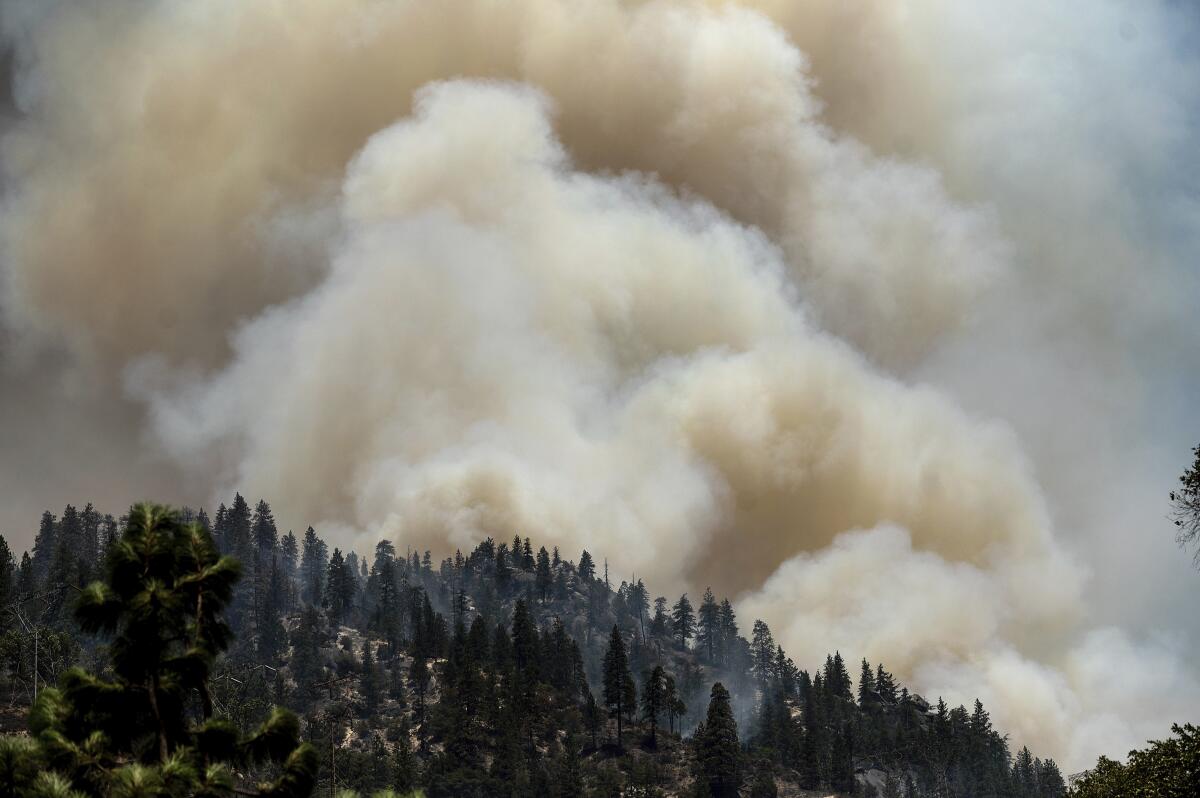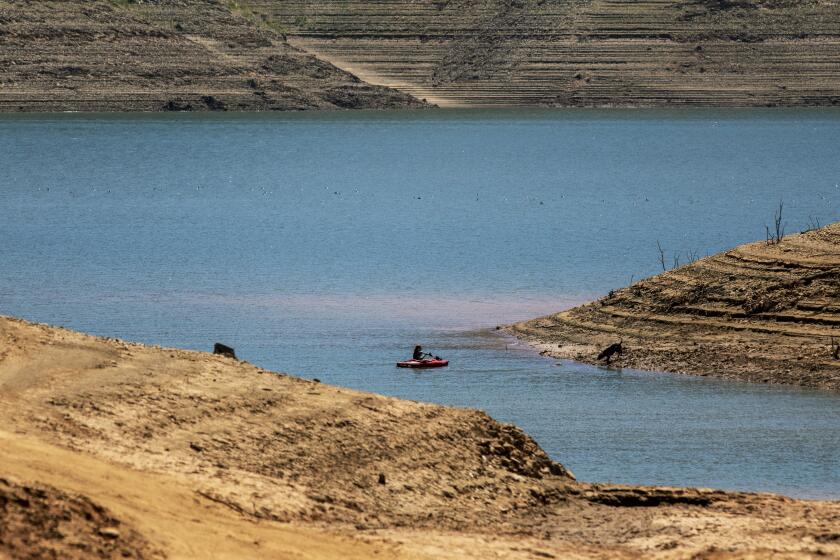Dixie fire becomes largest in California while crews struggle to gain footing on Tamarack blaze

- Share via
As the Dixie fire becomes California’s largest wildfire of the year, new questions are being raised about how officials have handled the Tamarack fire near the Nevada state border.
In a letter to U.S. Forest Service chief Vicki Christiansen, Rep. Tom McClintock (R-Elk Grove) asked why the Tamarack fire burning in Humboldt-Toiyabe National Forest was placed under “monitor status” for several days after its discovery.
“Why was this decision made?” McClintock wrote. “What legal authority authorized the [U.S. Forest Service] to allow this wildfire to burn in lieu of immediate full suppression?”
As of Friday morning, the Tamarack fire had grown to 58,417 acres with only 4% containment, the Forest Service said.
Earlier this week, it swelled over the Nevada state line for the first time, and on Thursday afternoon, it ignited a 2,500-acre spot fire near Highway 395 that is still growing.
The Dixie fire is now the second fire in California to surpass 100,000 acres this year, after the Sugar fire.
In an incident update, Forest Service officials said the Tamarack fire started July 4 after a lightning strike in the Mokelumne Wilderness “on a rocky ridgetop with sparse fuels and natural barriers to fire spread,” and noted that there were several other high-priority fires burning at the time.
On July 16, “high winds caused rapid downslope fire spread,” the agency said, and “with this change in the fire, resources were quickly dispatched to the site.”
More details about the fire’s management strategy are forthcoming, said U.S. Forest Service spokeswoman Erica Hupp, noting that crews currently remain focused on managing the fire’s significant growth and protecting nearby communities.
The fire has spurred evacuations for residents in Alpine County and in Nevada’s Douglas County. Evacuation warnings have also been issued in Lyon County, Nev.
“Our intent is to keep you fully informed on the fire’s activities and our suppression efforts as the incident progresses,” the Forest Service said.
As wildfires ravage hundreds of thousands of acres across California, more is being learned about the damaging effects of their smoke.
Yet even as beleaguered crews combat the region’s blazes, the Dixie fire in Butte and Plumas counties continues to grow.
On Friday, the fire swelled to 142,940 acres, the California Department of Forestry and Fire Protection said — representing a gain of about 30,000 acres overnight. It is only 18% contained, official said. The fire has now surpassed the state’s previous largest blaze, the 105,000-acre Beckwourth Complex fire, which is now nearly fully contained.
The Dixie fire’s wind-whipped embers also ignited a spot fire, dubbed the Fly fire, which has grown to 1,650 acres with no containment, spurring additional evacuations.
During a community briefing Thursday night, Cal Fire deputy incident commander Chris Waters said the Dixie fire is unlike anything he has experienced in more than two decades of fighting fire.
“The fire behavior conditions that we’re facing right now are really quite unprecedented, and at historical levels,” he said, noting that long-range spot fires— some as far away as five miles — are “beyond the pale of what I’ve seen in my career.”
Fuels, including both dead and green vegetation, are at dryness levels not typically seen until much later in the year, he said, and the fire is releasing extreme amounts of energy in the form of gigantic smoke columns and pyrocumulonimbus clouds.
The Edward Hyatt Powerplant at Lake Oroville could go offline as soon as August and trigger a potential power crunch this summer.
Conditions will get worse this weekend, according to Dixie fire incident meteorologist Julia Ruthford.
Humidity levels hovering over the fire are already in the single digits, while wind gusts along the area’s higher peaks are reaching 40 mph.
“Over the past week, we have seen a very critical combination of different fire elements going on, and that trend is continuing,” Ruthford said. “Unfortunately, that critical pattern is going to continue and actually worsen over the next couple of days.”
Fire crews this weekend will contend with even drier conditions as temperatures increase by at least five degrees, Ruthford said, noting that unstable conditions will also allow the smoke columns to grow even higher as breezy winds advance Friday and Saturday.
“I really wish I had better news to tell you, something good to put in the forecast,” she said, “but it looks like we’re going to be really looking toward a very critical next three days coming up.”
Evacuation orders and warnings related to the Dixie and Fly fires have been issued in large portions of Butte and Plumas counties. Affected areas can be viewed here.
Pets at the Plumas County animal shelter on Mill Creek Road will need to be picked up if East Quincy’s evacuation warning becomes mandatory, officials said Friday.
The Tehama County Sheriff’s Office has also issued evacuation warnings for areas in the path of the fire.
The threat of thunderstorms and lightning prompts Oregon officials to ask for firefighters from outside the region to prepare for additional blazes.
And although the Dixie fire has become California’s largest fire of the year to date, it isn’t even half of the size of the massive Bootleg fire in Oregon, which on Friday swelled to more than 400,000 acres.
The lightning-sparked fire — currently the largest fire burning in the U.S. — ignited July 6.
In the weeks that followed, it knocked out power lines, nearly derailing California’s electric grid, and sent smoke spewing across much of the continent.
As of Friday, the Bootleg fire was 40% contained.
More to Read
Sign up for Essential California
The most important California stories and recommendations in your inbox every morning.
You may occasionally receive promotional content from the Los Angeles Times.


















